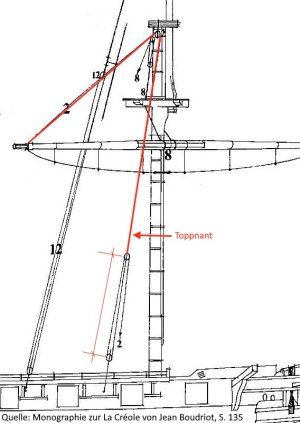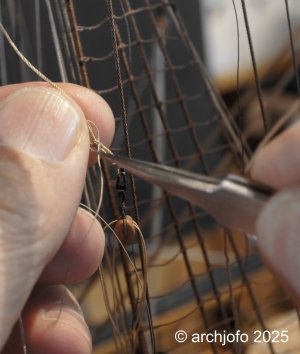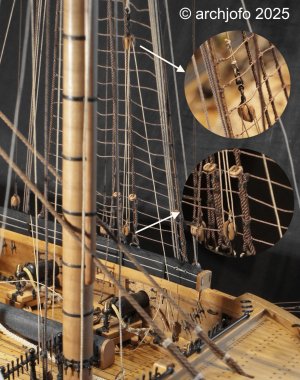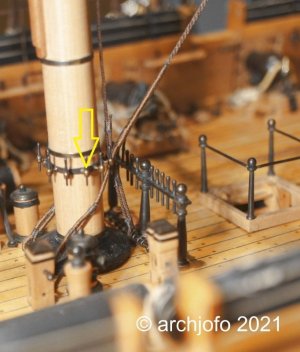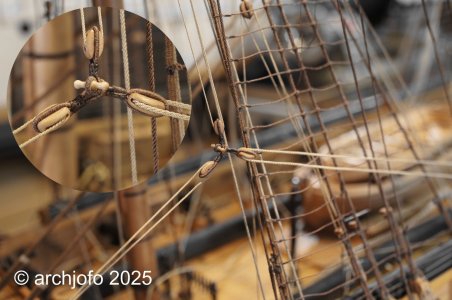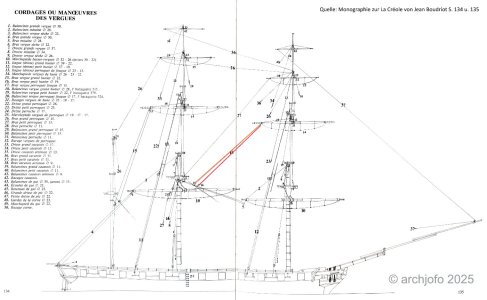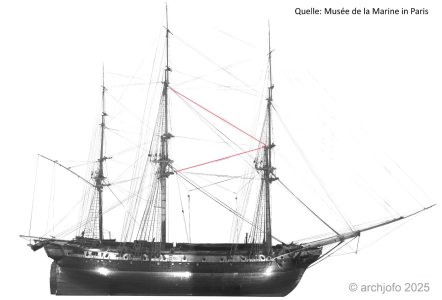Hello,
It's nice to see that after so long, there's still interest in my model.
Thank you very much to you, and to everyone for the likes.
Continuation: Fore braces / Bras de misaine
Before installing the fore braces, I revisited my question regarding the attachment of the standing parts to the stays and tried to gather further information on this topic.
Ultimately, based on advice from colleagues in relevant forums, I came to the conclusion that a rolling hitch seems quite appropriate here. In French, this is called an amarrage à fouet.
Before attempting the model, I tried tying a knot on a piece of rope. The loose line was secured to the stay using seizing.
I find this solution plausible and will therefore implement it accordingly on the model.
View attachment 520457
In this context, there was still a need for clarification regarding the routing of the fore topsail braces, since, according to the monograph, their standing parts should also be attached to the mainstay, where the fore braces are also attached.
View attachment 520456
However, the original Paris model shows the routing of the fore topsail braces differently than in the monograph. The standing parts run upwards to the main topmast stay where they are tied, as shown in the following illustration.
View attachment 520454
The aforementioned routing of the topsail braces was obviously quite common at that time. It should also be noted that the ship models from around 1800 in the Musée de la Marine have split foremast braces, i.e., the running parts run downwards via blocks on the mainstay for mooring, and the standing parts are attached to the main topmast stay.
This is also how it is shown and described in the Harland. Therefore, I am once again following the Paris model and not the monograph.
View attachment 520455
To be continued...




